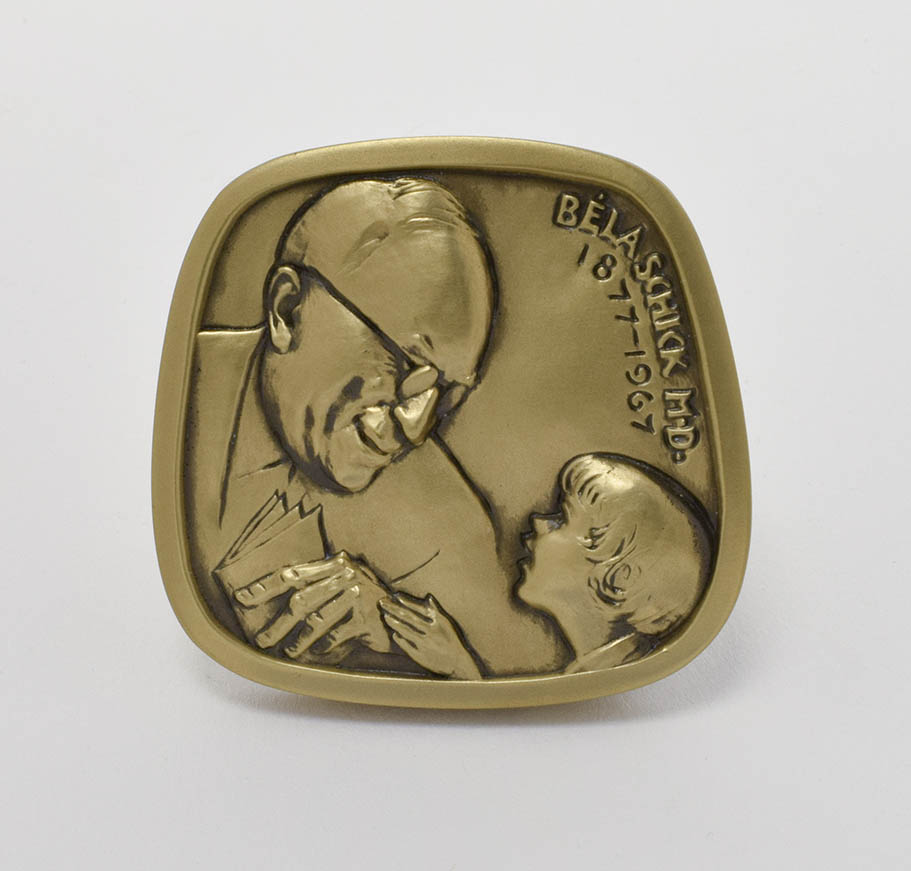Béla Schick (1877–1967)
Gerta Ries Wiener (Germany 1898-2000 New York)
USA, 1990
Bronze, h. 1 ¾ x w. 1 ¾ in.
Cincinnati Skirball Museum, Jewish-American Hall of Fame Collection, gift of Mel and Esther Wacks, Debra Wacks, and Shari Wacks, 2019.7.43
Béla Schick was born in Hungary and brought up in Graz, Austria. Young Schick quoted the Talmud, “the world is kept alive by the breath of children,” to persuade his father to allow him to pursue continued education in pediatrics, rather than to join the family grain merchant business. He eventually attended medical school and in 1902 joined the Medicine Faculty of the University of Vienna where he remained until 1923. He emigrated to the United States and from 1923 directed the Pediatric Department of Mount Sinai Hospital, New York City. From 1936 he was also professor at Columbia University. From 1950 to 1962 Schick headed the Pediatric Department of Beth-El Hospital, Brooklyn, New York. Studying problems of immunity, he and Clemens von Pirquet first coined the term ‘allergy’ as a clinical entity. Schick made important studies on scarlet fever, tuberculosis, and nutrition for infants but gained international renown for the Schick Test. This test determined susceptibility to diphtheria, and eventually led to the eradication of the childhood disease that attacked 100,000 Americans in 1927, leading to about 10,000 deaths. Schick coordinated a massive five-year campaign in which 85 million pieces of literature were distributed by Metropolitan Life Insurance Company with an appeal to parents to “Save your child from diphtheria.” These brochures were created by Gerta Ries, a talented young artist who had recently emigrated from Germany. This same Gerta Ries (Wiener) was commissioned over 75 years later to create the Dr. Béla Schick medal for the Jewish-American Hall of Fame.


